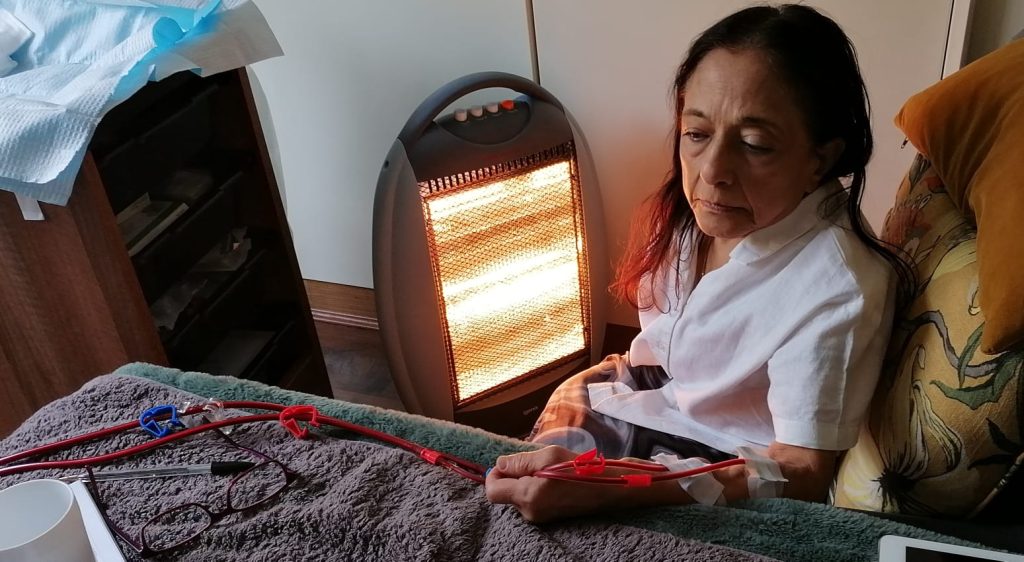
By Edwin Austin
For nearly two decades, Sehnaz Hanslot’s life has revolved around a machine. Since both of her kidneys failed in 2007, she has spent more than 32,000 hours hooked up to a dialysis machine — the equivalent of almost four full years.
“For me, a day on dialysis is what it feels like for most people waking up and working an eight-hour day,” Ms. Hanslot said. “It’s a full-time job.”
At 50, she endures five dialysis sessions a week at home. Each one lasts up to seven hours, often leaving her shivering, cramping, and drained of energy. Dialysis keeps her alive, but as she puts it, “I’m surviving, not living.”
Ms. Hanslot’s story is now at the center of a new campaign from the African Caribbean Leukaemia Trust, a British charity urging national action to address what it calls a “living donor crisis.” The organization warns that thousands of patients from Black, Asian, and other minority backgrounds are spending years trapped on dialysis, waiting for a transplant that may never come.
More than 30,000 people in Britain are currently on dialysis, according to the National Institute for Health and Care Research. Most patients undergo treatment three times a week, four hours a session — roughly 624 hours a year. For many, dialysis is a temporary bridge to a transplant. For Ms. Hanslot, it has become her way of life.
She has been on the National Kidney Transplant Register for 15 years, but a match has never been found. Because she received multiple blood transfusions in the early stages of her illness, her blood developed antibodies that make a compatible kidney exceedingly rare. Although she was told the antibodies would fade with time, they have not.
Recent medical advances have brought a measure of hope. New desensitization treatments can reduce the impact of harmful antibodies, making it possible for patients like Ms. Hanslot to receive a kidney from a living donor. Her doctors have recommended pursuing that path, but cultural stigma, lack of awareness, and family hesitation often keep potential donors from coming forward.
“When I’ve brought it up with relatives, they say, ‘It’s a big ask,’” she said. “People don’t realize that living with kidney failure is a big ask, too.”
National health data underscores the barriers patients like her face. Ethnic minorities make up about 14 percent of the United Kingdom’s population, but they account for 36 percent of those waiting for a transplant. Asian patients wait an average of 27 months for a kidney, compared with 21 months for white patients. Between 2019 and 2024, nearly nine in ten living kidney donors were white; almost all donated to white recipients. Only 8 percent of living donors were Asian, and most of those donations stayed within their own communities.
One of the main reasons for the disparity, according to the charity, is family consent. Fewer than one in three Asian families agree to organ donation, compared with nearly two in three white families.
Orin Lewis, the chief executive of the African Caribbean Leukaemia Trust and chair of the National Black Transplant Alliance, said that Ms. Hanslot’s experience “represents thousands of people across the U.K. and around the world who endure unimaginable challenges while waiting for a donor.”
“A living kidney donation offers not just survival, but freedom,” Mr. Lewis said. “Freedom from pain, fatigue, and isolation.”
The charity is calling for a national conversation — one that replaces silence with information and hesitation with compassion. For Ms. Hanslot, that conversation could mean the difference between another year on dialysis and a second chance at life.
“I’ve held on all these years, hoping for a call,” she said. “Knowing that a living donor could give me that call — that’s the light I haven’t seen in a long time.”





